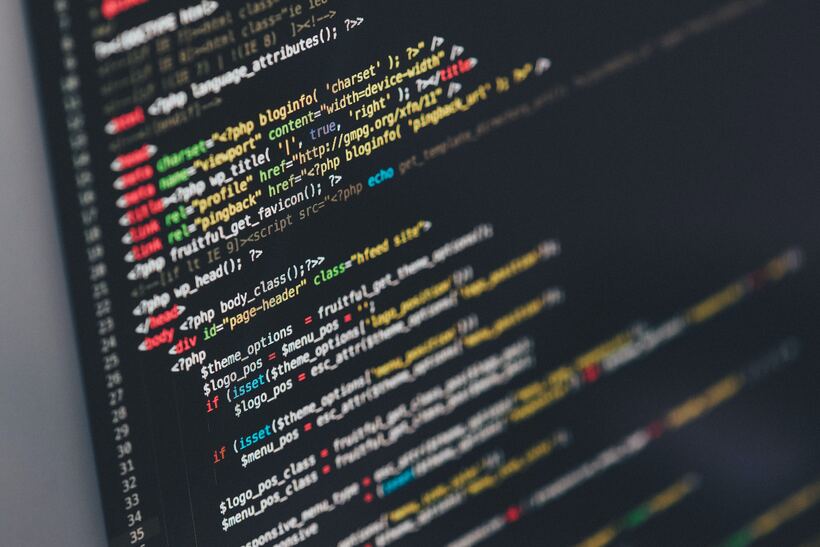
Unlocking the true potential of a team lies in effective collaboration. When team members can seamlessly communicate, share ideas, and work together towards a common goal, magic happens! But let’s face it – traditional communication tools can sometimes feel like roadblocks rather than enablers. That’s where ChatGPT comes in!
We’ll explore how ChatGPT revolutionizes team collaboration by providing an intelligent and intuitive platform for communication. Get ready to discover a whole new level of synergy within your team as we dive into the world of ChatGPT and its remarkable features that enhance teamwork like never before!
The Importance of Team Collaboration
Collaboration is the fuel that drives successful teams. It’s not just about individuals working in silos, but rather a collective effort where each member brings their unique skills and perspectives to the table. When team members collaborate effectively, they can pool their knowledge, brainstorm innovative ideas, and tackle complex problems together.
One of the key benefits of team collaboration is increased efficiency. By leveraging the strengths of different team members, tasks can be delegated appropriately, ensuring that everyone is working on what they do best. This not only speeds up the completion of projects but also improves overall productivity.
Team collaboration also fosters creativity and innovation. When diverse minds come together, new ideas are sparked through discussions and exchanges. The synergy that arises from collaborative environments often leads to out-of-the-box thinking and breakthrough solutions.
Effective collaboration enhances communication within a team. Through open dialogue and shared decision-making processes, misunderstandings are reduced while transparency is increased. Team members feel heard and valued when their opinions are respected and considered during collaborative discussions.
Another critical aspect of teamwork is skill development. Collaboration provides opportunities for learning from others’ expertise while sharing one’s own knowledge with teammates. As individuals work alongside each other towards common goals, they can expand their skill sets by acquiring new techniques or gaining insights into different areas.
Team collaboration boosts morale and creates a positive work culture within an organization. When individuals feel supported by their peers and see the impact of their collective efforts on project outcomes or organizational success as a whole, it fosters motivation and engagement among team members.

Introducing ChatGPT and its Features
ChatGPT is an innovative tool that is revolutionizing team collaboration. Powered by OpenAI’s advanced language model, it brings a new level of efficiency and effectiveness to communication within teams.
One of the standout features of ChatGPT is its ability to generate human-like responses in real-time conversations. This means that team members can engage with ChatGPT just as they would with a fellow colleague, making for more natural and seamless interactions.
Another notable feature is the flexibility of ChatGPT. It can be customized to suit the specific needs and preferences of each team. Whether it’s integrating with existing communication platforms or tailoring responses based on industry-specific jargon, ChatGPT adapts to enhance collaboration in any context.
ChatGPT offers multi-turn conversation support, enabling ongoing dialogues rather than one-off requests. This allows for more dynamic exchanges where ideas can be explored and refined collaboratively.
The continuous improvement of ChatGPT through reinforcement learning ensures that it becomes increasingly proficient at understanding complex queries from users over time.
Introducing ChatGPT into your team’s workflow opens up exciting possibilities for enhanced productivity and streamlined communication. With its wide range of features designed specifically for collaborative environments, this tool has immense potential to transform how teams collaborate effectively in the digital age.
How ChatGPT Improves Team Communication
ChatGPT is an incredibly powerful tool that can greatly enhance team communication and collaboration. With its advanced natural language processing capabilities, it allows teams to have dynamic conversations with each other, making it easier to share ideas and exchange information.
One of the key ways in which ChatGPT improves team communication is by providing instant access to knowledge and expertise. Instead of spending hours searching for information or waiting for a response from a colleague, team members can simply ask ChatGPT questions and receive accurate answers in real-time. This not only saves time but also ensures that everyone has access to the same information, leading to more informed decision-making.
Another benefit of using ChatGPT for team communication is its ability to facilitate brainstorming sessions. Team members can bounce ideas off ChatGPT and get immediate feedback or suggestions. This opens up new possibilities for creative thinking and problem-solving within the team.
ChatGPT promotes inclusivity within teams by bridging language barriers. It can translate messages into different languages, ensuring that all team members are able to participate in discussions regardless of their native language.
ChatGPT provides a centralized platform for storing conversations and documents related to projects. This makes it easy for teams to refer back to previous discussions or reference materials without having to search through multiple channels or email threads.
Incorporating ChatGPT into your team’s workflow can significantly improve communication efficiency, foster collaboration among team members from diverse backgrounds, and ultimately boost productivity across the board.
Real-Life Examples of Successful Team Collaboration using ChatGPT
ChatGPT has revolutionized team collaboration by providing a powerful tool for communication and problem-solving. Here are some real-life examples where teams have successfully utilized ChatGPT to enhance their collaboration:
1. Designing Marketing Campaigns: A marketing team used ChatGPT to brainstorm ideas for an upcoming campaign. By feeding the AI with relevant information about their target audience, industry trends, and desired outcomes, they received creative suggestions that sparked new concepts and strategies.
2. Project Management: A cross-functional team used ChatGPT as a virtual assistant to streamline project management tasks. They assigned tasks, set deadlines, and monitored progress by conversing with the AI in real-time. This allowed them to stay organized, track milestones, and ensure everyone was on the same page.
3. Customer Support: An e-commerce company integrated ChatGPT into their customer support system. Whenever customers had queries or issues, the AI provided instant responses based on pre-defined knowledge bases and FAQs. This reduced response time significantly while maintaining accuracy.
4. Remote Collaboration: With remote work becoming more prevalent, teams have turned to ChatGPT for seamless collaboration across different time zones and locations. The AI acts as a centralized hub where team members can exchange information, discuss ideas, and make decisions collaboratively.
5. Creative Writing Projects:A group of authors collaborated on a writing project using ChatGPT. They shared drafts,discussed plot twists,and sought feedback from each other. The AI’s ability to generate creative suggestions helped them overcome writer’s block,staying motivated throughout the process.
These are just a few examples showcasing how teams leverage ChatGPT’s capabilities in various industries. With its natural language processing abilities,it empowers efficient communication,collaboration,and problem-solving among team members.
Tips for Implementing ChatGPT in Your Team’s Workflow
1. Start with a trial period: Before fully incorporating ChatGPT into your team’s workflow, consider running a trial period to familiarize everyone with the tool and gauge its effectiveness. This will allow team members to get comfortable using it and provide valuable feedback.
2. Define clear objectives: Clearly define the goals you want to achieve by implementing ChatGPT. Whether it is enhancing communication, streamlining processes, or improving productivity, having clear objectives will help guide your team’s utilization of the tool.
3. Establish guidelines and best practices: Develop guidelines on how to effectively use ChatGPT within your team. This may include setting boundaries on when and how often to rely on AI-generated responses versus human input, as well as establishing protocols for reviewing and verifying information provided by ChatGPT.
4. Train your team members: Provide proper training sessions or resources that educate your team about the capabilities and limitations of ChatGPT. Empower them with knowledge so they can make informed decisions while using the tool.
5. Encourage collaboration and feedback: Foster an environment where open communication is encouraged between team members when utilizing ChatGPT in their workflow. Encourage them to share their experiences, challenges encountered, and suggestions for improvement.
6. Monitor performance and iterate: Regularly monitor how ChatGPT is being used within your team’s workflow and assess its impact on collaboration outcomes. Use this data-driven approach to identify areas of improvement or adjustments needed in order to optimize its integration within your processes.
Remember that successful implementation of any new technology requires ongoing evaluation, adaptation, and learning from experience!
Potential Challenges and Solutions for Using ChatGPT
While ChatGPT offers exciting possibilities for enhancing team collaboration, it’s important to be aware of potential challenges that may arise when implementing this tool. One challenge is ensuring that the AI-generated responses are accurate and reliable. As with any AI system, there is a risk of inaccurate or nonsensical outputs.
To address this challenge, it’s crucial to provide clear instructions and context to ChatGPT. By providing specific guidelines on what kind of information is required and setting expectations about the quality of responses, teams can reduce the likelihood of receiving irrelevant or incorrect answers.
Another challenge is the potential for bias in AI-generated content. It’s essential to regularly review and evaluate the outputs from ChatGPT to identify any biases or problematic language choices. This can be done by involving diverse team members in reviewing and refining the system’s responses.
Privacy and security concerns also need to be taken into account when using ChatGPT. Organizations should ensure that sensitive information isn’t shared through chat interactions with the model. Implementing safeguards such as encryption, access controls, and regular data audits can help mitigate these risks.
One more challenge lies in managing user expectations regarding response times. While ChatGPT provides quick responses most of the time, there might be instances where longer wait times occur due to high demand or technical issues. Setting realistic expectations about response times can prevent frustration among users.
The Future of Team Collaboration with ChatGPT
As we’ve explored throughout this article, team collaboration is crucial for achieving success in today’s fast-paced and interconnected world. With the introduction of ChatGPT, a powerful language model developed by OpenAI, teams now have an innovative tool to enhance their communication and productivity.
ChatGPT offers a range of features that facilitate seamless interaction between team members. From its natural language processing capabilities to its ability to provide instant responses and suggestions, ChatGPT streamlines the collaboration process like never before. Teams can rely on it for brainstorming sessions, project updates, problem-solving discussions, and more.
Real-life examples have already demonstrated the effectiveness of using ChatGPT in team settings. Whether it’s helping remote teams bridge the distance gap or supporting large organizations with complex workflows, ChatGPT has proven itself as an invaluable asset.
Implementing ChatGPT into your team’s workflow requires careful consideration and planning. It is essential to establish clear guidelines on how to use it effectively while also addressing potential challenges such as biases or overreliance on AI-generated content. By setting expectations and fostering a culture of open communication alongside technology integration, teams can maximize the benefits offered by ChatGPT.
Looking ahead, the future holds exciting possibilities for team collaboration with advancements in AI technology like ChatGPT. As developers continue refining these tools through iterations and user feedback loops, we can expect even more sophisticated models that understand context-specific nuances better than ever before.
The collaborative power provided by AI-based platforms will undoubtedly revolutionize teamwork across industries globally. As businesses embrace these innovations fully while also being mindful of ethical considerations related to privacy and data security concerns—team collaboration will reach new heights.

